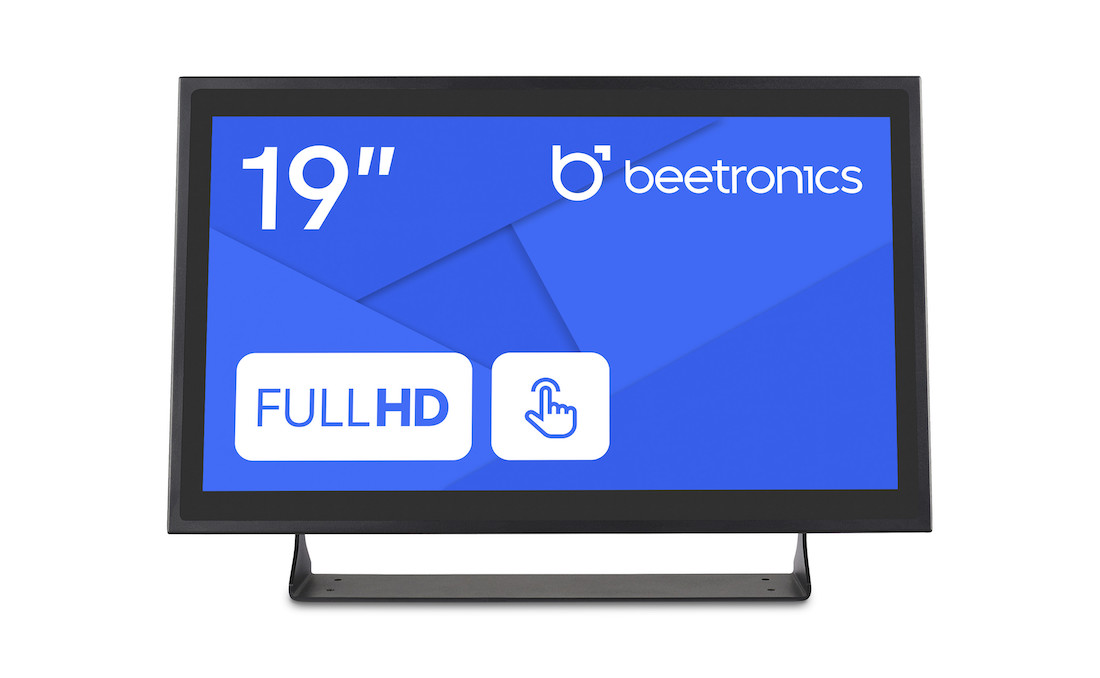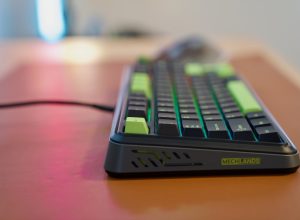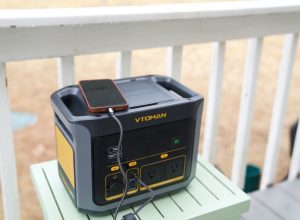Touch panel technology took root in our daily lives. It made a huge impact on every sphere of our existence, from digital gadgets like smartphones, gaming consoles, and tablets to many more like bank ATMs, ticket machines in airports or train stations, electronic kiosks in malls, and even navigation displays in modern cars.
While touchscreens can make using a device much easier, you must be sure to pick the proper one for your requirements. Sometimes, a big flat screen is not enough to match all the needs. And in some cases having a 19 inch touchscreen monitor is not a luxury but rather a necessity.

Why touchscreen?
A touch screen can be more convenient for some operations with your PC as you don’t need to do anything with your mouse and keyboard. It works because the device is filled with touch-sensitive pixels.
A brief electric current flows across the screen’s conducting layer and it has a very small and safe electric charge. Some electrical charges travel onto your finger from the screen when the contact is made.
Main advantages of touchscreen technology
Some of the following might sound obvious, but it is still worth mentioning.
Touch commands – touchscreen displays support not only gestures but multiple touches as well. Touchscreen monitors are excellent for everyone who wants a more interactive computer experience, not just those who are blind or visually handicapped.
Several benefits of touch screen displays are listed below: eliminate the need for a keyboard and mouse, save space, open more opportunities for integration in complex devices, and make it simpler to use while traveling.
It can be made possible with several technological approaches. Modern touch screens use capacitive or resistive technology for touch recognition, but there are more methods to explore.
Touch screen technologies
Let’s take a closer look at the approaches:
- Resistive displays are the most popular of all approaches. They are made with several flexible layers, and between each layer, they are filled with air or gas. During the touch the layers osculate, which allows the monitor to determine where the touch was made.
- Capacitive displays can determine the touch calculating the capacity change. When a finger (or another type of specialized input tool, like a stylus), comes into contact with the display, it recognizes when and where the user touches the screen.
There are two types of capacitive displays:
- The surface capacitive approach is used frequently in big monitors. A glass substrate is positioned on top of an electrode film that is transparent inside the panel, which is then shielded from the elements. At the device’s four corners, an electric voltage is delivered, and when an object touches the screen, it is determined by monitoring changes in electrostatic capacity.
- Projected capacitive is used frequently on smaller screens, especially mobile devices. This surface alters electrostatic capacity across several electrodes when a finger brushes it. By calculating the electrical current ratios, it is possible to determine exactly where contact occurs.
- Surface acoustic wave. The development of this technique addressed the limitations of resistive film touch screens’ poor light transmittance. This touch panel uses the attenuation of ultrasonic elastic waves on the surface to identify the location on the screen where a finger makes contact. The waves are absorbed and reduced by the finger when it touches the screen. These modifications are then used to determine the location. The enhanced visibility and strong light transmittance of this touch panel are among its advantages.
- Optical. This approach is a complex of sensing techniques. Through infrared image sensors that triangulate the site of contact, the screen can detect the position of a touch.
Which one to choose?
Making such a decision it’s better to evaluate different factors and requests first.
What is the main purpose of the device?
Think of your project as a whole. Is it important to have exactly the touchscreen monitor here? This step should be aimed at analyzing the need for such a display.
Which size should the screen be?
Depending on the role it should play and its location — sometimes it’s no other way but to install a 19-inch touchscreen monitor and not an inch less. Especially, if the activity is connected with designing or modeling projects.
Buying a touchscreen monitor for personal use or to install in individual workspaces — consider devices with a screen of around 15 inches. It can fit most desks and make up more free space because it doesn’t require additional input devices.
Movable or stationary?
Do you need your monitor to be mounted to the wall or some stand, or should it be movable?
Depending on the use of your touch panel, placing it on a rolling stand will allow users to work in the optimal locations to assist with whatever task is at hand. People can be more flexible and inventive thanks to it.
Having a moving monitor can be vital for groups working in innovation laboratories. However, since not every meeting or presentation room will be fitted with a touchscreen display, it can also give those spaces more flexibility.
However, as you might not want expensive equipment being carried about, sometimes attaching the touchscreen display to the wall is the best choice.
Which OS should it be working with?
In general, users don’t think too much about which operating system the touch display is working with. But what they need is smooth and steady performance along with a pleasant picture.
What else should be considered is the type of connection with a computer. Experts from Beetronics advise: if the workload on the device is not too big — look into the displays with built-in PC. In situations where the load is bigger and good performance is important — choose the monitor which you can connect to your PC.
Conclusions
Choosing the proper touchscreen requires lots of factors to be considered. Some of them are screen size, PC compatibility, and the tasks it should be able to perform.
Disclosure: We might earn commission from qualifying purchases. The commission help keep the rest of my content free, so thank you!



